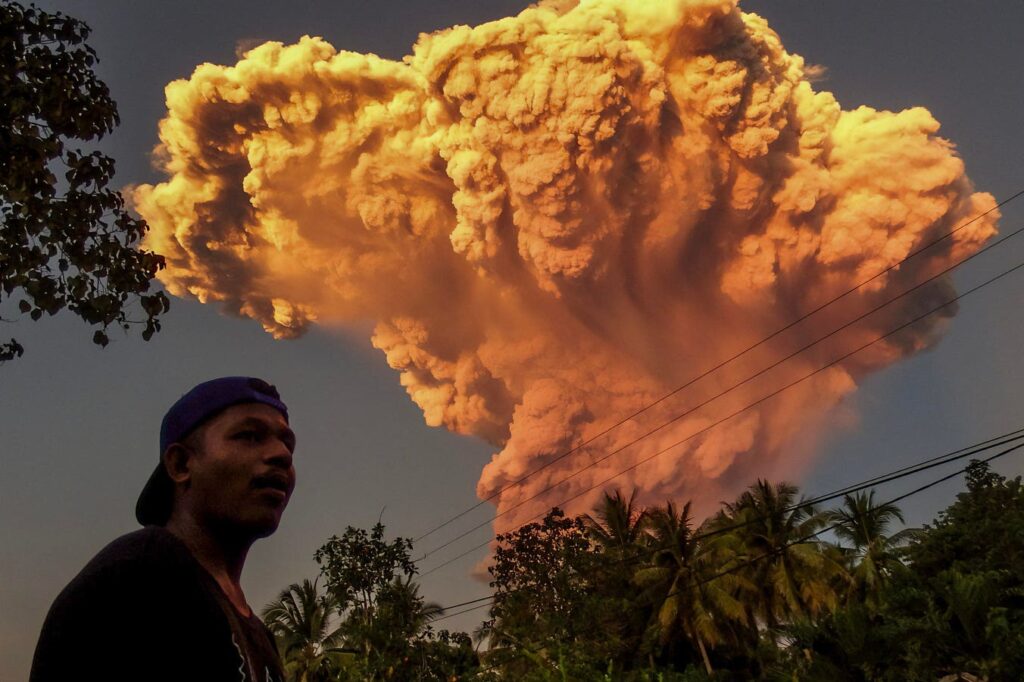A villager watches the eruption of Mount Lewotobi Laki-Laki as seen from Talibura village in Sikka, … More
AFP via Getty Images
The eruption of Mount Lewotobi Laki-Laki on the Indonesian island of Flores prompted authorities to close three regional airports and cancel dozens of international flights. Over 14,000 passengers are stranded on Flores, Bali and Lombok. The eruption spewed a colossal ash column over 10,000 meters into the atmosphere, posing a danger to commercial airplanes flying at altitudes around 30,000 to 42,000 feet (9.000 to 12.800 meters).
Authorities raised alert levels to the highest of a four-tiered system, evacuating over 4,000 people from a 7-kilometer-wide area around the volcano. During an eruption in November 2024, nine people were killed when hot ash ignited their homes. According to authorities, this time lahars pose the greatest danger. Intense rainfall, as common in tropical latitudes, and water vapor in the eruption column can mix with volcanic ash and debris forming deadly mudflows called lahars by geologists after an Indonesian word for ravines on the slopes of a volcano.
Lewotobi is a twin volcano with two summit craters: the Lewotobi Laki-laki (husband Lewotobi) and Lewotobi Perempuan (wife Lewotobi).
Lewotobi’s twin peaks are classic stratovolcanoes, formed by successive layers of lava, ash, and volcanic debris. Volcanic activity is documented since the 17th century, with most eruptions limited to the smaller Lewotobi Laki-laki.
Indonesia frequently experiences earthquakes and volcanic eruptions because it lies near the intersection of several tectonic plates, including the Pacific Plate, the Eurasian Plate, the Australian Plate and the Philippine Plate. As parts of the colliding plates and seafloor are pushed into Earth’s mantle, blobs of molten rock rise upwards and come into contact with water and gases, resulting in highly-explosive mix on the surface.
Over 106 volcanoes are dotting the Indonesian archipelago; at least 60 have been active in the past 400 years. Some of the largest eruptions in recorded history, like the Tambora in 1815 and Krakatoa in 1883, happened here.
Mount Merapi, located on Indonesia’s most densely populated island of Java, is one of the sixteen most dangerous volcanoes on the planet. Merapi’s last major eruption in 2010 displaced 10,000 and killed 347 people, the deadliest volcanic eruption in recent years.
